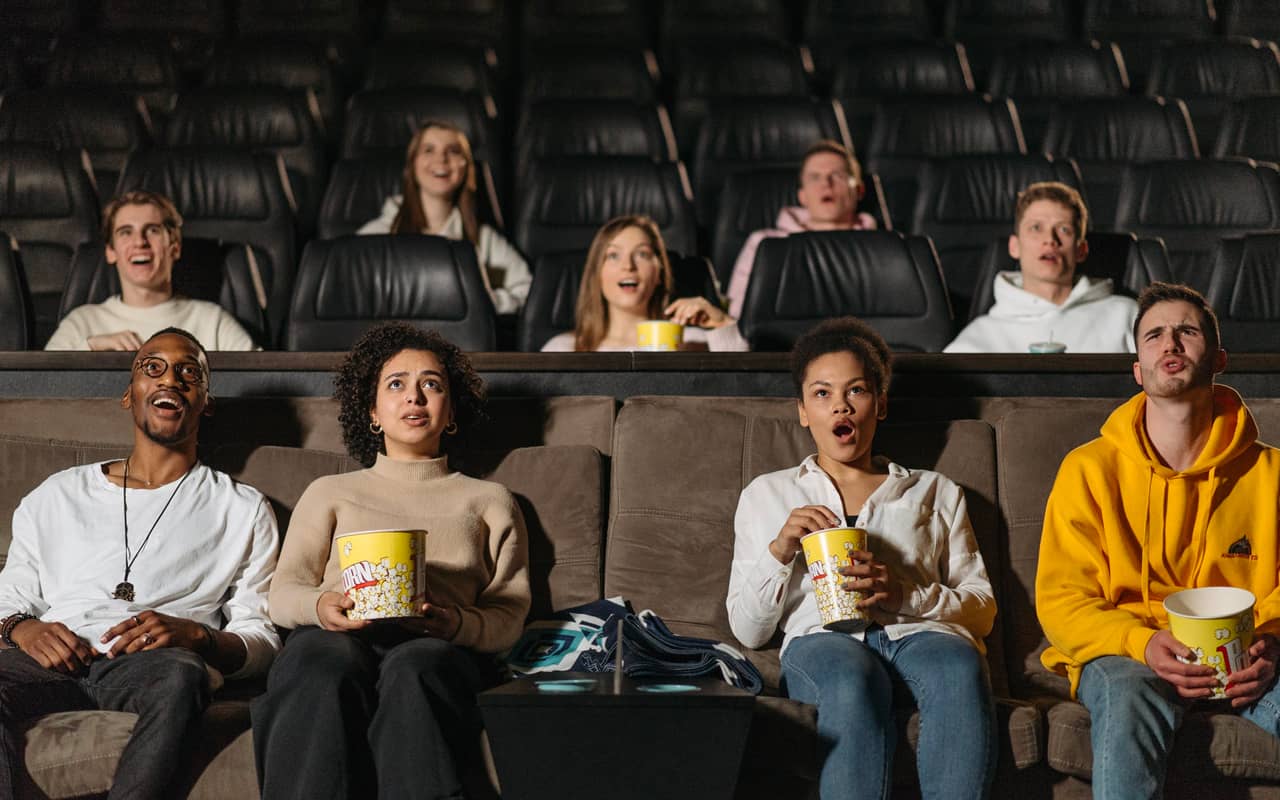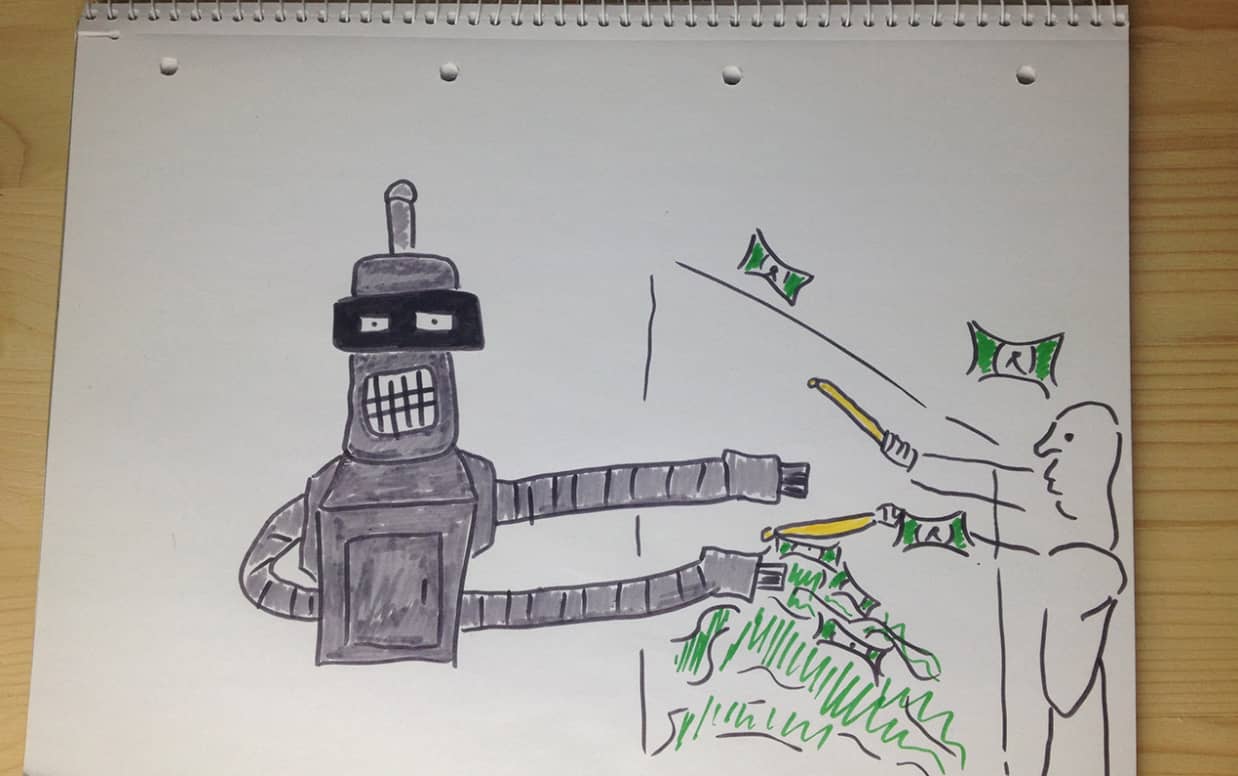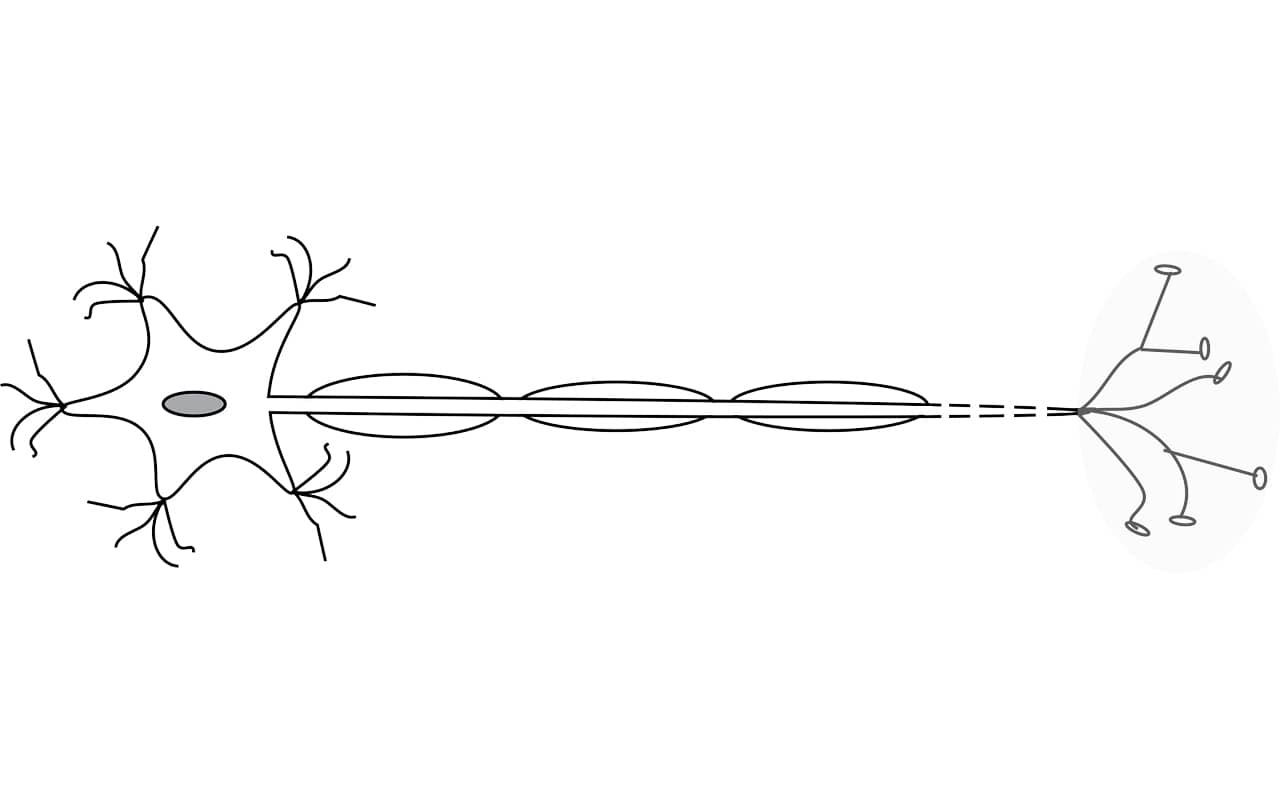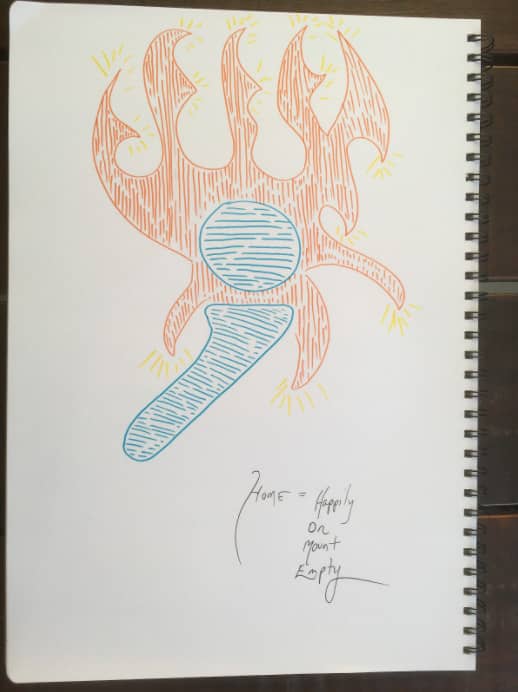Podcast: Download
Subscribe: Apple Podcasts | RSS
 Some people say that visual memory boils down to recalling what things look like.
Some people say that visual memory boils down to recalling what things look like.
That’s part of the picture, sure.
But if you really want to understand visual memory thoroughly, you need to dig deeper.
And that’s exactly what we’re going to get into on this page.
As a memory expert, I personally needed to figure out the definition of this aspect of memory for a few reasons. The main one is that many of my students and coaching clients memorize highly visual information at memory competitions or on the job.
For example, some of my clients are police officers or work for the fire department. They need to remember things like license plates and building layouts. And they need to do so in a flash.
It’s especially useful to understand the visual aspect of how memory works because visual memory ranges from the concrete to the incredibly abstract. Having health visual memory is therefore essential for navigating the world and you can improve it.
So if you’re ready to “see” deeper into what visual recall is really all about, including different ways to make yours sharper, let’s get started.
What Is Visual Memory?
Visual memory is not merely the ability to recall what you see. This kind of “visual recall” includes how you remember features of reality like:
- Objects
- Words
- People
- Activities and events
- Mental images that appear in your imagination
- Dreams
Visual memory is not to be mistaken with visual memory techniques that people use to learn faster in combination with mnemonic images. But you do use visual memory during both learning and recall.
When exactly does visual memory come into play? To take just a few examples, a healthy visual memory helps you:
- Remember where you put your keys and other things you want to stop losing
- Spelling
- Incidents that you describe after the fact
- Copying notes from textbooks and screens
Thus, visual memory is technically any kind of memory formed by information that enters your mind through a visual system.
This foundational principle is where things get really interesting. For example, there are types of synesthesia where some individuals might experience sounds in highly visual ways.
And if you think about it, most of our experience in watching a movie is built not from what we see. The brain builds 70% of the experience (or more) from what we hear.

With that in mind, Steven J. Luck and Andrew Hollingworth define this term in their book Visual Memory like this:
“The memory must retain properties of the original perceptual states generated when the memory was encoded.”
This definition of visual memorization means that you could feel something but if your brain translates it into a visual concept at any time, it will count as a visual memory.
Let me give you an example:
In choreography, many people close their eyes to help them remember moves. Later, they will picture themselves or others going through these movements. In some cases, there are granular details you can visually focus on in your imagination without ever having “seen” them.
For example, in martial arts, it’s possible to imagine combat scenarios and how you would move in response without ever having to go through such a situation. This is how powerful our visual senses are, and we draw directly on visual memory in order for our minds to animate or bring to life these hypothetical events.
As Susanna Siegel points out in The Contents of Visual Experience, there are a number of ways information (content) enters our minds:
- We have beliefs about what we see before it is seen (which can cause us to mistake what we’re seeing)
- What we see guides our physical actions in concrete ways (like when you open your hand to a particular size to accommodate a door handle)
- We introspect about what something might look like (as in the choreography example above)
You also have to think about situations where the autonomic nervous system’s sympathetic branch has been stimulated – such as when your pupils dilate. Optical illusions often draw upon these automatic responses to trick our minds.
Some of these points might seem abstract, but everything comes down to one word: context. Keep context in mind when defining visual memory and you will enjoy greater accuracy when describing it.
How Does Visual Memory Work?
As we’ve just discovered, the exact context in which visual memory comes into play matters.
For example, if we’re talking about memorizing the content of scenes or events, we need to take into account how our eyes move relative to this kind of sensory input.
As John Henderson demonstrates, eye movements are very important to understanding how we remember various scenes and events. These directly impact on how the brain makes a “composite” mental image of what we’ve experienced.
This means that visual memory is not really experienced or built. It is composed after the fact in collaboration with our working memory.
If we’re talking about short term memory as it relates to visual and spatial memory concerns (visuo-spatial), Mitchell R. Riley and Christos Constantinidis urge us to look at neurons in the prefrontal cortex. They conclude that focused attention is the main role the brain performs before visual memories can form.
According to Greg D. Reynolds and Alexandra C. Romano, the real place to get an understanding of visual memory is to look at early development. In an article called “The Development of Attention Systems and Working Memory in Infancy,” they show that eye fixation is involuntary.
This means that something in our brains drives us to look at things and fix on them until our “posterior orienting system” develops voluntary abilities. In other words, our visual memory trains us to “remember” how to control our eyes by controlling them for us!
How is visual memory tested?
Typically, you’ll see scientists using the Arthur Benton Visual Retention Test.
But here’s an important learning tip:
If you’re looking for visual memory examples, it’s useful to look at each stage of life, rather than a blanket approach. How visual memory works when you’re an infant is very different from when you’re age one or ninety one.
How to Improve Visual Memory: 13 Visual Memory Exercises and Activities
Now we come to the question of improving visual memory.
Yes, you can.
Keep context in mind as you go through these twelve approaches, however. Your exact definition of visual memory in a specific context matters if you want to reach your goal.
Exercise One: Describe Objects Without Using Certain Words
Can you tell me what color an orange is without using the word “orange”?
This is an incredible visual memory exercise and perhaps the most challenging.
For more challenges, try to describe these objects without referring to them by name:
- Truck
- Map
- Pencil
- Elf
Exercise Two: Use Number Rhymes
Have you ever heard of this memory technique for memorizing lists?
If you had to memorize the word orange as the first listed word, you could associate it with a gun.
That’s because one rhymes with “gun.” You would imagine the gun shooting the orange and the resultant explosion.
If you had to memorize “map” as the second word, you could have it rolled up and inserted into a shoe. Shoe is the image for two because the two words rhyme.
Come up with your rhymes or learn this pegword method and then memorize ten items in order by causing your rhymed words to interact with the list.
Exercise Three: Visualize Acronyms In Space
You know what “FBI” stands for, right?
But have you ever tried visualizing the letters floating over your head?
Here’s a robust list of acronyms to work with, along with a few more related visualization exercises.
Exercise Four: Recall An Entire Day
When you’re lying in bed tonight, try to recall as much as you can of the day. Make sure you see what’s happening from the minute you wake up and sustain continuous recall as long as you can.
If you have aphantasia and can’t see images in your mind, focus on other representations. You can also try my hyperphantasia guided meditation.
Exercise Five: Recall Your Dreams
Keeping a dream journal is a powerful way to exercise your visual memory.
For many years now, I’ve hardly skipped a morning without remembering my dreams. You can learn more about how to remember dreams if you’d like an established procedure to follow.
Exercise Six: Visual Meditation
There are many ways to meditate. Many will improve your visual memory in a general way.
But did you know there are 9 powerful visual meditation exercises you can complete? Try them all!
The trick with visual meditation is to pick interesting and engaging material to work with.
And you can increase the challenge over time.
For example, start with a simple candle flame. Bring an imaginary flame to mind and animate it.
Then meditate while thinking about a memorized poem or song lyrics. Try to see the lyrics coming out with correct spelling as your favorite singer performs the song.
Can you tell just how much more challenging this second exercise will be? It’s this additional level of challenge that makes it so powerful for your growth.
Exercise Seven: Scan Pictures
Get out a magazine and look for the main details on your first pass. Name them out loud.
Then, take a second pass. Look for things that you missed the first time around, including shadows.
Consider visual aspects like the height and width of objects. Also mentally measure the distances between things in the image.
Finally, try to figure out the vanishing point and the negative space. These are skills that artists develop, and they are good for your visual memory. It also counts as a powerful cognitive activity that is especially good for adults.
Exercise Eight: Verbalize Pictures
A simple way to improve your visual memory is to talk about what you see when looking at art.
Take this medieval art, for example:
It’s challenging to describe, isn’t it?
That’s why giving it a go will help your visual memory grow.
As you describe what you see, work in different directions. For example, you can start with the birds at the top and work your way down.
Then, on your second pass, you can start with the man on the left and move to the right (or vice versa).
As you proceed, monitor yourself. Try to make sure that you’re using unique words as much as possible.
Instead of always saying “man,” add some variety with words like “monk,” “penitent,” etc.
Exercise Nine: Draw A Story From A Book
Stephen King says in On Writing that readers rarely imagine characters as he visually describes them. That’s why there aren’t a lot of details about clothing and the like.
One excellent way to exercise a number of visual memory aspects is to draw what you imagine with your own hands.
If you struggle to visualize characters at all, you can start with ones that you have seen. For example, here’s a drawing of Bender from Futurama I did to create a mnemonic device for myself.

Exercise Ten: Draw A Story From Your Life
We all have many interesting experiences.
But few of us take time to visualize them in a meaningful way.
One theme I’ve noticed in my life is the ongoing lack of a stable, permanent home.
When I completed this visual memory exercise, I expressed the pain by using fire.
Then, I colored a stylized letter “I” in a cooling color. Finally, I added an acronym-poem to help feel okay about this lack of stability in my life.
Of all the visual memory strategies I know, this has been the most rewarding. It also plugs deeply into sensory memory and gives it a good exercise.
If you like this kind of activity, also consider giving mind mapping a try.
Exercise Eleven: Teach Something
This approach can take a bit of patience, but it works for a clear and obvious reason.
When you teach someone else a skill, you access at least two parts of your visual mind:
- Your mental image of how you do it
- A new mental image of how the learner sees an alien task
As a bonus variation, try to remember learning to tie your own shoes. You might have a memory of someone explaining it to you as well.
Moving between first and third person points of view on a teaching and learning experience is a great way to stretch your visual skills.
Exercise Twelve: Study Resemblances And Patterns
Do owners really look like their pets?
I don’t know, but the more interesting point is to work out why your brain thinks so.
Study the picture above. Can you spot the exact characteristics that make you think that there’s a relationship between these two?
Write out your answer to verbalize what you’re seeing. Feel free to get your hand out and trace certain features, or even draw them out.
You’ll learn a lot in the process.
Exercise Thirteen: Use A Memory Palace
One of the most effective visual memory exercises involves the Memory Palace technique.
It’s a fun way to take locations you see with your own eyes everyday and turn them into a tool that helps you remember things better.
To get started, you’ll want to draw your first Memory Palace and then select a few things you want to remember – like words from a language you’ve always wanted to learn.
Then, you mentally navigate your way through the rooms you’ve selected, literally using your mind’s eye to help you “see” a journey.
I can’t think of a better workout for the visual aspects of your memory than this ancient technique. To learn more about how it can help you exercise your brain and help you remember anything, enrol here:
Short Term Visual Memory Vs. Holistic Hyperphantasia
Over the years, thousands of people have told me that they want to improve their short term memory.
Although that’s fine, really what we all need to be focused on is holistic memory improvement that includes visual improvements.
For that, you might benefit from developing hyperphantasia (the opposite of aphantasia). Here’s a guided meditation for that:
By extending your practice into the multi sensory aspects of your brain, you’ve got a much better chance of eliminating any visual memory deficits currently holding you back.
And now you have a ton of exercises you can run through to experience rapid improvement.
So what do you say?
Which exercise are you going to add to your memory workout first?
Related Posts
- Nelson Dellis On Remember It! And Visual Memory Techniques
Looking for visual memory techniques? And I mean truly visual. In this episode of the…
- 5 Memory Palace Examples To Improve Your Memory Training Practice
Here are 5 Memory Palace examples that will improve your memory training practice quickly, even…
- Memory Athlete Braden Adams On The Benefits Of Memory Competition
Braden Adams is one of the most impressive memory athletes of recent times. Learn to…











